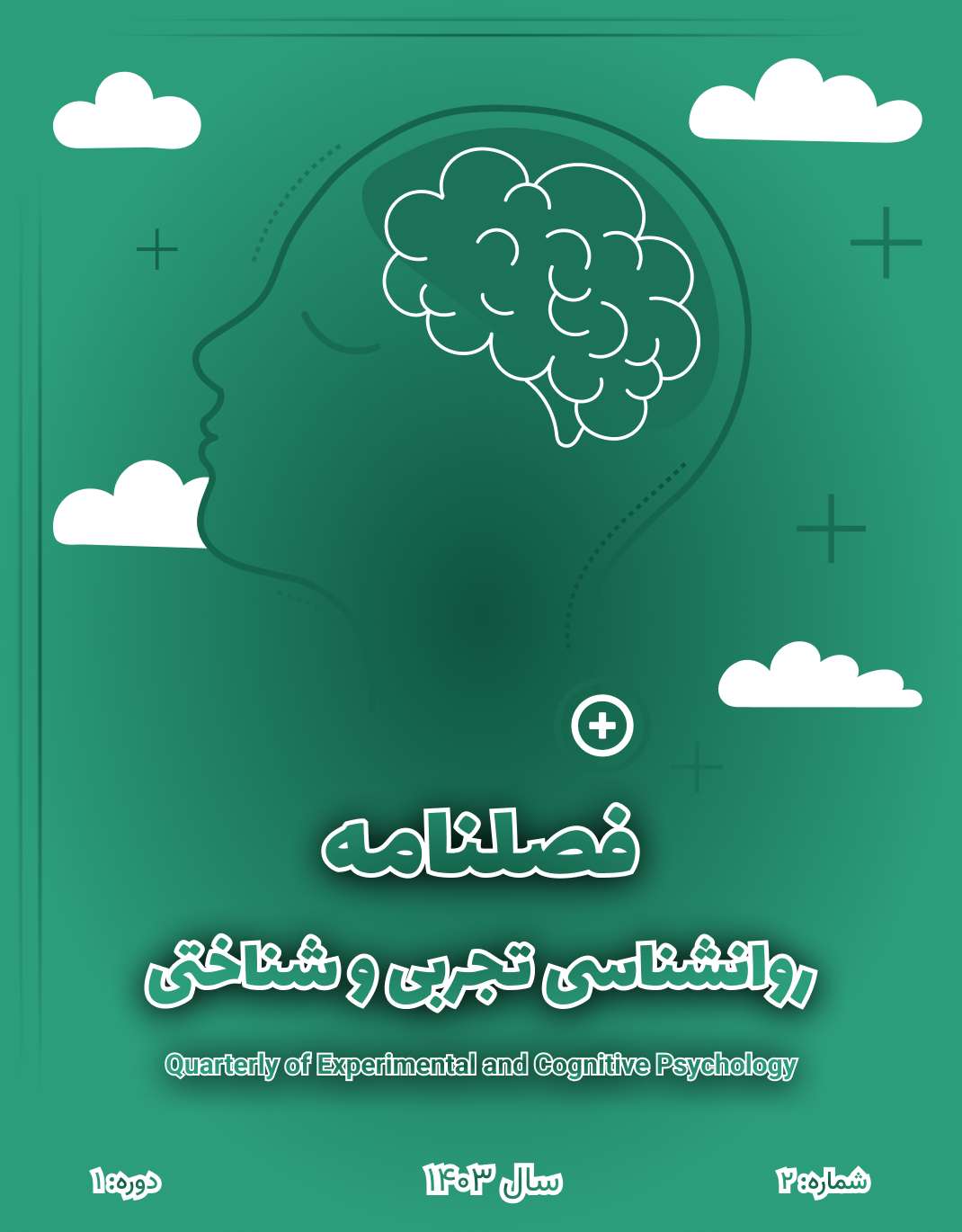دلبستگی و مشارکت اجتماعی: بررسی تاثیر دلبستگی به مکان بر مشارکت اجتماعی
کلمات کلیدی:
حس دلبستگی, مشارکت, دانشگاه بجنوردچکیده
هدف: این پژوهش با هدف بررسی تأثیر دلبستگی به مکان (با تمرکز بر مؤلفههای رضایت و تعلق) بر میزان مشارکت اجتماعی دانشجویان ساکن خوابگاههای دانشگاه بجنورد انجام شده است. مواد و روش: پژوهش حاضر به روش توصیفی-پیمایشی و از نوع تحلیلی-همبستگی انجام شد. جامعه آماری شامل کلیه دانشجویان ساکن خوابگاههای دخترانه و پسرانه دانشگاه بجنورد بود که از طریق روش نمونهگیری در دسترس انتخاب شدند. ابزار گردآوری اطلاعات، پرسشنامه محققساخته با 21 گویه بستهپاسخ بود که روایی و پایایی آن تأیید گردید (آلفای کرونباخ 0.853). در مجموع، 124 پرسشنامه قابل تحلیل از طریق نرمافزار SPSS مورد تحلیل قرار گرفت. یافتهها: نتایج تحلیل همبستگی نشان داد که بین مؤلفههای دلبستگی به مکان و مشارکت اجتماعی رابطه مثبت و معناداری وجود دارد. ضریب همبستگی بین حس رضایت و مشارکت 0.606 و بین حس تعلق و مشارکت 0.560 بهدست آمد (در هر دو مورد p < 0.01). همچنین، نتایج رگرسیون چندگانه نشان داد که ترکیب این دو مؤلفه قادر است حدود 39 درصد از تغییرات مشارکت اجتماعی را پیشبینی کند (R² = 0.397). مؤلفه رضایت با ضریب β = 0.414 نقش مؤثرتری نسبت به مؤلفه تعلق (β = 0.29) در پیشبینی مشارکت ایفا میکند. نتیجهگیری: یافتهها نشان دادند که دلبستگی به مکان، بهویژه رضایت از محیط زندگی، نقش مؤثری در افزایش مشارکت اجتماعی ایفا میکند. بنابراین، طراحی محیطهای خوابگاهی با رویکرد افزایش کیفیت ادراکشده از فضا میتواند موجب تقویت تعاملات اجتماعی و مسئولیتپذیری در دانشجویان گردد.
دانلودها
مراجع
Buta, N., Holland, S. M., & Kaplanidou, K. (2014). Local communities and protected areas: The mediating role of place attachment for pro-environmental civic engagement. Journal of Outdoor Recreation and Tourism, 5, 1-10. https://doi.org/10.1016/j.jort.2014.01.001
Chang, J., Lin, Z., Vojnovic, I., Qi, J., Wu, R., & Xie, D. (2023). Social environments still matter: The role of physical and social environments in place attachment in a transitional city, Guangzhou, China. Landscape and Urban Planning, 232, 104680. https://doi.org/10.1016/j.landurbplan.2022.104680
Daryanto, A., & Song, Z. (2021). A meta-analysis of the relationship between place attachment and pro-environmental behaviour. Journal of Business Research, 123, 208-219. https://doi.org/10.1016/j.jbusres.2020.09.045
Diener, A. C., & Hagen, J. (2022). GEOGRAPHIES OF PLACE ATTACHMENT: A PLACE-BASED MODEL OF MATERIALITY, PERFORMANCE, AND NARRATION. Geographical Review, 112(1), 171-186. https://doi.org/10.1080/00167428.2020.1839899
Han, J. H., Kim, J. S., Lee, C. K., & Kim, N. (2019). Role of place attachment dimensions in tourists' decision-making process in Cittáslow. Journal of Destination Marketing & Management, 11, 108-119. https://doi.org/10.1016/j.jdmm.2018.12.008
Hosany, S., Buzova, D., & Sanz-Blas, S. (2020). The influence of place attachment, ad-evoked positive affect, and motivation on intention to visit: Imagination proclivity as a moderator. Journal of Travel Research, 59(3), 477-495. https://doi.org/10.1177/0047287519830789
LeVan, C. A. (2016). Neighborhoods That Matter: How Place and People Affect Political Participation https://journals.sagepub.com
Line, N. D., & Hanks, L. (2019). Boredom-induced switching behavior in the restaurant industry: the mediating role of attachment. Journal of Hospitality & Tourism Research, 43(1), 101-119. https://doi.org/10.1177/1096348018762579
Nursyamsiah, R. A., & Setiawan, R. P. (2023). Does place attachment act as a mediating variable that affects revisit intention toward a revitalized park? Alexandria Engineering Journal, 64, 999-1013. https://doi.org/10.1016/j.aej.2022.08.030
Özkan, D. G., & Yilmaz, S. (2019). The effects of physical and social attributes of place on place attachment: A case study on Trabzon urban squares. Archnet-IJAR: International Journal of Architectural Research. https://doi.org/10.1108/ARCH-11-2018-0010
Parry, S., & Hassan, L. M. (2019). Understanding the relationship between smoking and place across multiple places through the lens of place attachment. Journal of Environmental Psychology, 62, 115-123. https://doi.org/10.1016/j.jenvp.2019.02.009
Patwardhan, V., Ribeiro, M. A., Payini, V., Woosnam, K. M., Mallya, J., & Gopalakrishnan, P. (2020). Visitors' place attachment and destination loyalty: Examining the roles of emotional solidarity and perceived safety. Journal of Travel Research, 59(1), 3-21. https://doi.org/10.1177/0047287518824157
Plunkett, D., Fulthorp, K., & Paris, C. M. (2019). Examining the relationship between place attachment and behavioral loyalty in an urban park setting. Journal of Outdoor Recreation and Tourism, 25, 36-44. https://doi.org/10.1016/j.jort.2018.11.006
Ramkissoon, H., Weiler, B., & Smith, L. D. G. (2012). Place attachment and pro-environmental behaviour in national parks: The development of a conceptual framework. Journal of Sustainable Tourism, 20(2), 257-276. https://doi.org/10.1080/09669582.2011.602194
Scannell, L., & Gifford, R. (2014). Comparing the theories of interpersonal and place attachment Place attachment: Advances in theory, methods, and applications. https://books.google.com/books
Shaykh-Baygloo, R. (2020). A multifaceted study of place attachment and its influences on civic involvement and place loyalty in Baharestan new town, Iran. Cities, 96, 102473. https://doi.org/10.1016/j.cities.2019.102473
Soonsan, N., & Somkai, U. (2023). Dimensions of gastronomic experience affecting sharing experience: place attachment as a mediator and length of stay as a moderator. JHTI, 6(1), 344-361. https://doi.org/10.1108/JHTI-07-2021-0171
Soopramanien, D., Daryanto, A., & Song, Z. (2023). Urban residents' environmental citizenship behaviour: The roles of place attachment, social norms and perceived environmental responsibility. Cities, 132, 104097. https://doi.org/10.1016/j.cities.2022.104097
Suntikul, W., & Jachna, T. (2016). The co-creation/place attachment nexus. Tourism Management, 52, 276-286. https://doi.org/10.1016/j.tourman.2015.06.026
Swapan, M. S. H., & Sadeque, S. (2021). Place attachment in natural hazard-prone areas and decision to relocate: Research review and agenda for developing countries. International Journal of Disaster Risk Reduction, 52, 101937. https://doi.org/10.1016/j.ijdrr.2020.101937
Tauzer, E. (2014). Place Attachment, Participation And Integrative Framing Within The Remediation And Restoration Efforts Of A Contaminated Waterbody: Onondaga Lake Watershed University of New York]. https://search.proquest.com
Wang, Z. (2024). Mid-Life Social Participation in People With Intellectual Disability: The 1958 British Birth Cohort Study. PLoS One, 19(5), e0302411. https://doi.org/10.1371/journal.pone.0302411
Yi, X., Fu, X., So, K. K. F., & Zheng, C. (2023). Perceived Authenticity and Place Attachment: New Findings from Chinese World Heritage Sites. Journal of Hospitality & Tourism Research, 47(5), 800-826. https://doi.org/10.1177/10963480211027629
Zhu, Y. (2014). Building A Community Of Our Own: How Can The Built Environment Help? Neighborhood Communal Space and Community Participation in Chinese Urban Communities University of Illinois]. https://search.proquest.com
دانلود
چاپ شده
ارسال
بازنگری
پذیرش
شماره
نوع مقاله
مجوز
حق نشر 2025 سيد مهدی ميرهاشمی, مصطفي ارغياني (نویسنده)

این پروژه تحت مجوز بین المللی Creative Commons Attribution-NonCommercial 4.0 می باشد.





